The Fujifilm FinePix S2950 is a budget-friendly bridge camera with an 18x optical zoom, manual controls, and easy AA power. This practical guide shows what it does well today, how to test a used body, and the quickest way to set it up for solid, reliable results.

What the Fujifilm FinePix S2950 Is and Why It Still Works
The Fujifilm FinePix S2950 is a bridge camera with a DSLR-style grip and a built-in 18x zoom lens (28–504mm equivalent). It was designed as an all-in-one tool for travelers, families, and learners who prefer a single, versatile camera instead of swapping lenses. Today, its appeal is simple: a long zoom reach, straightforward handling, and a retro digital look at a very approachable cost.
Who will enjoy it
It’s great for beginners, thrift-friendly creators, and hobbyists who want low-stakes creativity. If you like the idea of a compact, self-contained camera that teaches exposure basics without extra lenses, the FinePix S2950 still makes sense.

Key Specs in Plain Language
Sensor and image quality
Sensor: 14MP 1/2.3-inch CCD. It shines in bright light. In dim scenes, expect visible noise at higher ISO settings, so keep ISO conservative for the cleanest files.
Lens and stabilization
Lens: 18x optical zoom (28–504mm equivalent) with optical image stabilization. This range covers wide landscapes to distant subjects, and stabilization helps keep telephoto shots usable hand-held.
Framing and video
Viewfinding: a simple electronic viewfinder (EVF) and a rear LCD for composing. Video: 720p HD is perfectly fine for casual clips and delivers a distinctly lo-fi, retro digital aesthetic that many creators enjoy.
Power and controls
Power: 4x AA batteries—widely available and easy to replace. Controls: PASM modes (Program, Aperture Priority, Shutter Priority, Manual) and Auto, so you can learn exposure at your own pace.

Real-World Use Cases in 2025
Where it excels
- Street and travel in daylight where the small sensor performs best.
- Nature and wildlife with the 504mm equivalent tele reach.
- Lo-fi vlogs and experimental video that lean into 720p CCD character.
- Teaching tool: practice shutter speed, aperture, and exposure without extra lenses.
My first distant subject at 504mm was a ferry edging across the harbor. I braced my elbows on the railing, used the EVF to steady the frame, and breathed out slowly before pressing the shutter. The surprise? How usable the shot was with stabilization—details I couldn’t see with the naked eye popped out in the photo.

Batteries, Storage, and Accessories That Work
Power
Use NiMH AA rechargeables for consistent performance. Keep a spare set charged. Alkalines work in a pinch but decline faster under load.
Memory
The camera supports SD/SDHC cards up to 32GB. For photos and 720p video, 8–16GB hits a sweet spot of capacity and file management.
Helpful extras
- Stability: a compact tripod or a sturdy mini tripod helps at long focal lengths.
- Carry: a small shoulder or sling bag suits the single-lens setup.
- Filters: with the right front adaptor, add UV or a polarizer to refine landscapes and skies.

Techniques to Get the Best Results
Manage light and motion
- Favor bright conditions and keep ISO low (100–400) to reduce noise.
- At long zoom, stabilize: brace your elbows, use a wall or tripod, or raise shutter speed.
- Try Shutter Priority for action and Aperture Priority for depth-of-field control.
Lean into the look
Embrace the 720p video and CCD color as a creative choice. Set white balance deliberately (for example, Daylight) to keep color consistent across a sequence.

Second‑Hand Buying Guide: Test Before You Pay
What to check in minutes
Bring fresh NiMH AAs and an SD/SDHC card. Test the zoom, screens, and power behavior. Inspect the lens and battery door, as wear can show here first.
- Fit fresh NiMH AAs; confirm the camera powers consistently
- Cycle the zoom fully several times; listen for grinding
- Half-press to focus at wide and telephoto; confirm AF locks
- Record a 20–30s 720p clip; play back to check audio/video
- Review a test image at full zoom for stabilization effectiveness
- Inspect battery door hinge and latch for cracks or looseness
- Open the card door; insert SD/SDHC and format in-camera
- Set a 5–10s exposure with lens cap on; check for hot pixels
- Examine EVF and rear LCD for brightness and pixel defects
- Check date/time battery retention after power off
Also look through the lens for haze, fungus, or excessive dust; confirm the zoom extends and retracts smoothly; listen for unusual motor noises.
Care, Maintenance, and Longevity
- Remove batteries during storage to prevent leakage.
- Keep the lens and body dry; avoid humid storage to limit fungus risk.
- Clean the front element with a blower and microfiber cloth only.
- Cycle and properly charge NiMH cells to maintain capacity.
- Use a pouch or small bag to protect controls and the battery door.
- Stick to SD/SDHC media; larger SDXC cards are not supported.

Who the S2950 Suits (and When to Skip It)
Best fits
First-time photographers, budget wildlife watchers, travel diarists, and creators leaning into a retro digital vibe will feel right at home with the Fujifilm FinePix S2950.
Maybe skip if
You often shoot in low light or need high-resolution video. The small CCD sensor prefers daylight, and 720p is intentionally simple.
For many, the value lies in low-risk learning and experimentation with a capable all-in-one.
Quick Start Settings for Day One
- Photo: 14MP Fine quality; cap ISO at 400; enable stabilization.
- Mode: Start in Auto, then try Aperture Priority or Shutter Priority to learn.
- AF: Center focus; half-press to confirm focus before shooting.
- Video: 720p at 30 fps; set white balance to taste for consistent color.
- Compose with the EVF in bright sun for greater stability and visibility.
Price and Availability Notes
The Fujifilm FinePix S2950 is commonly found second-hand and often includes a strap and lens cap. Confirm whether batteries or an SD card are included, and always test in person when possible to verify zoom operation, screen health, and consistent power-up.
FAQs
Is the Fujifilm FinePix S2950 good for beginners?
Yes. It offers Auto for simplicity and PASM modes for learning exposure. The built-in 28–504mm zoom covers most subjects, and AA batteries are easy to source.
What batteries and memory cards does the S2950 use?
Power: 4x AA (use NiMH rechargeables for best results). Storage: SD/SDHC cards up to 32GB; 8–16GB is a practical choice.
How does the S2950 perform in low light?
The 14MP 1/2.3-inch CCD sensor shows noise at higher ISO. Keep ISO low, use stabilization or a tripod, and prefer well-lit scenes for best quality.
What should I check when buying the S2950 second-hand?
Zoom smoothness, battery compartment corrosion, EVF/LCD health, lens clarity, battery door latch, motor noise, and hot pixels via a long exposure test.
Ready to explore a used Fujifilm FinePix S2950? Check current stock, get notified when one arrives, or add NiMH AAs and an SDHC card to round out your setup. Then jump into PASM modes and start learning exposure with confidence.




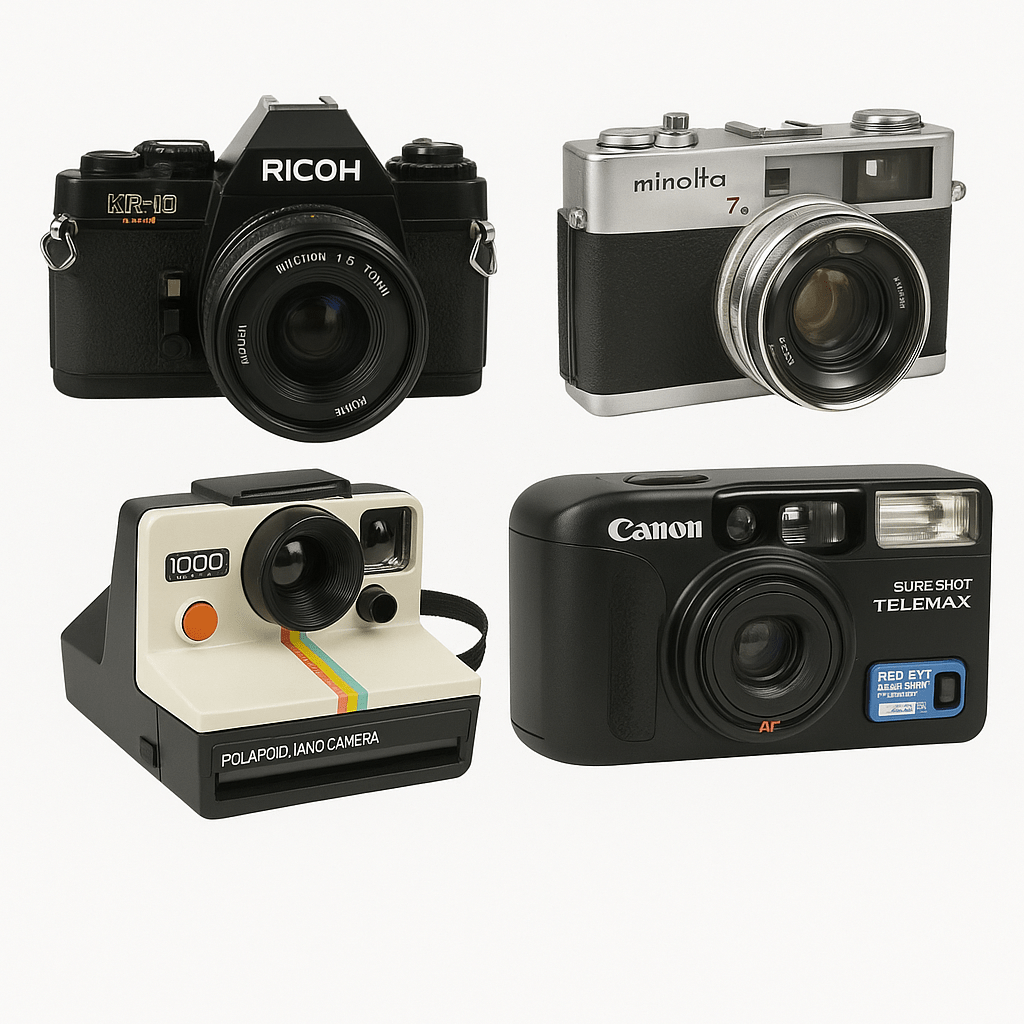
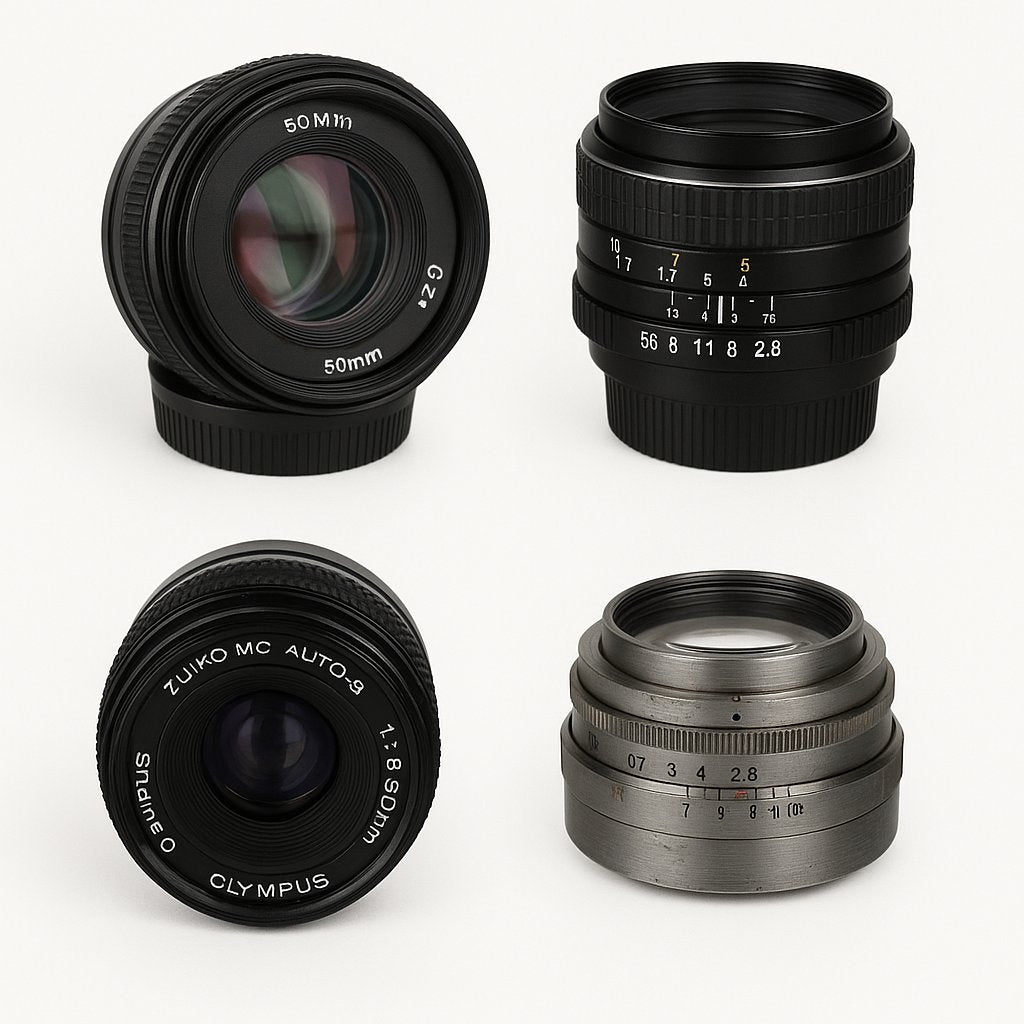
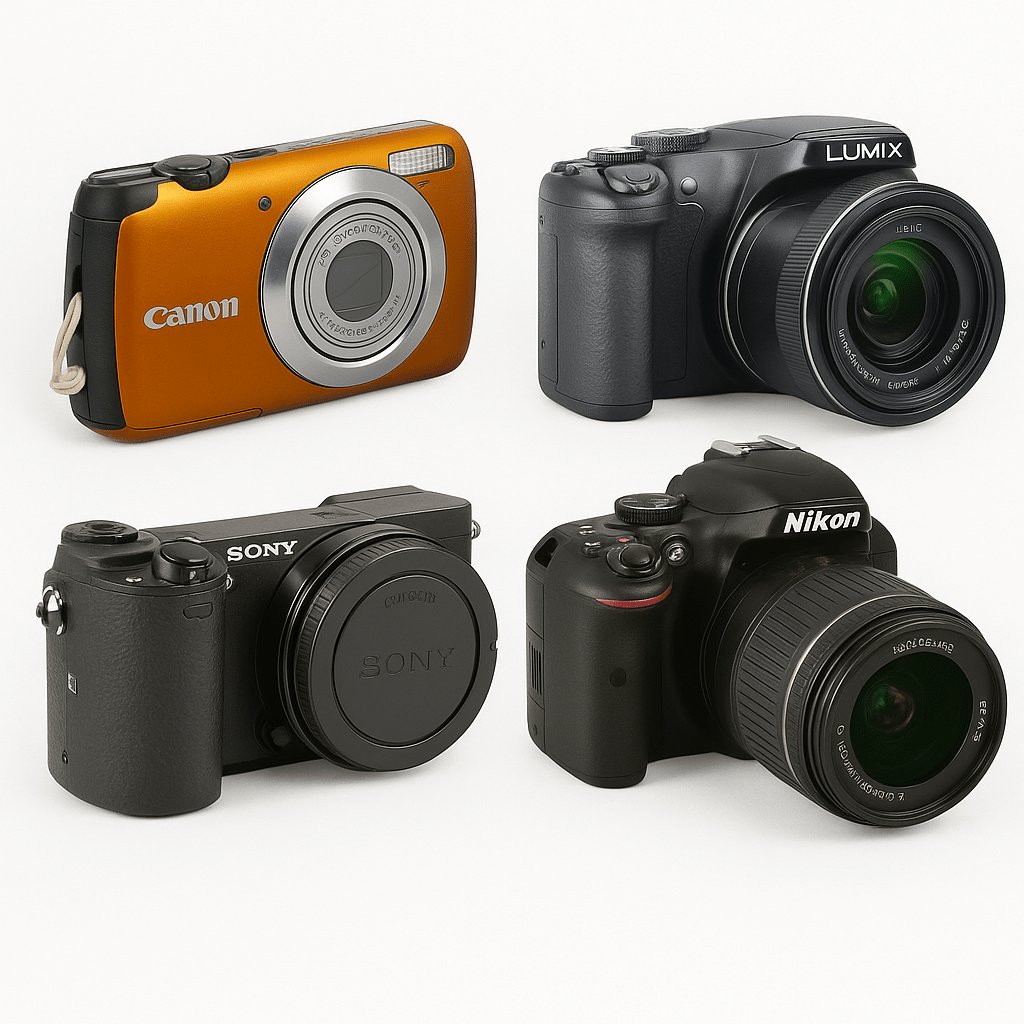
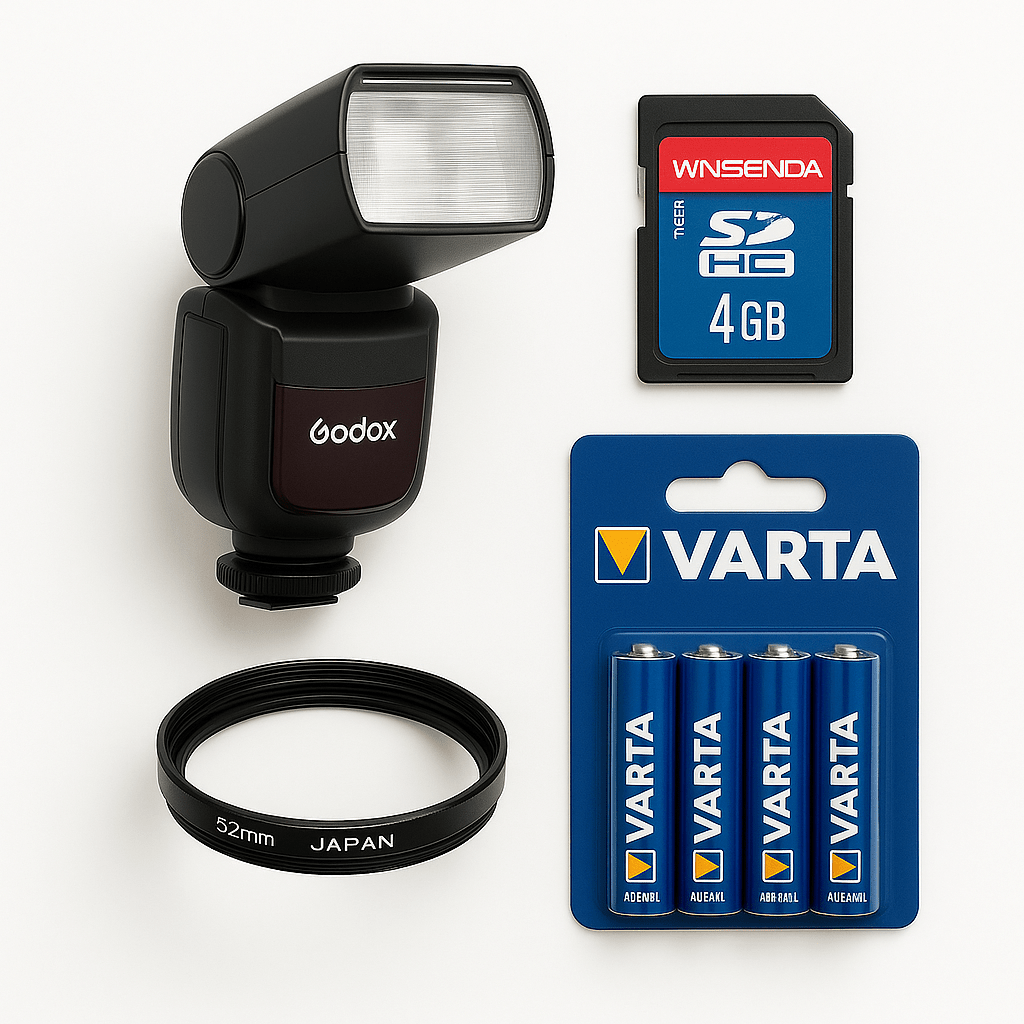
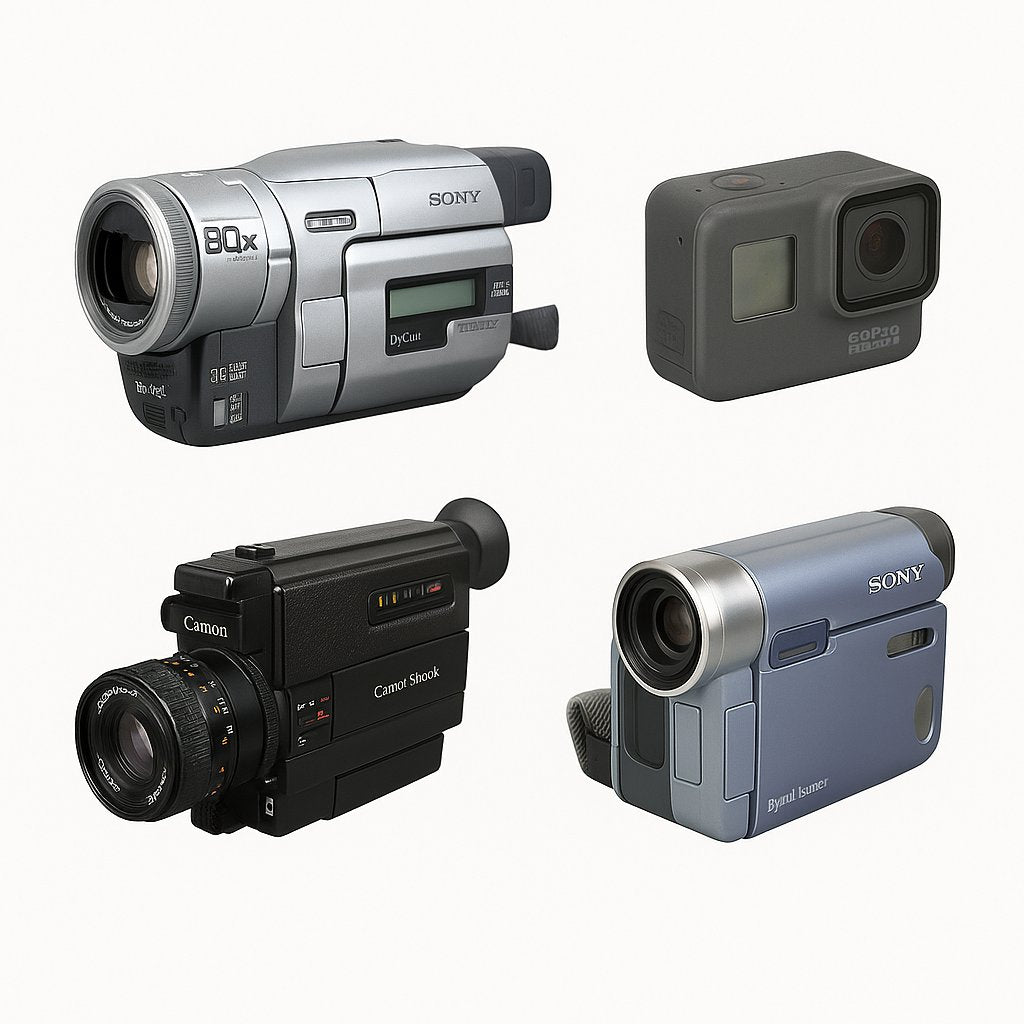
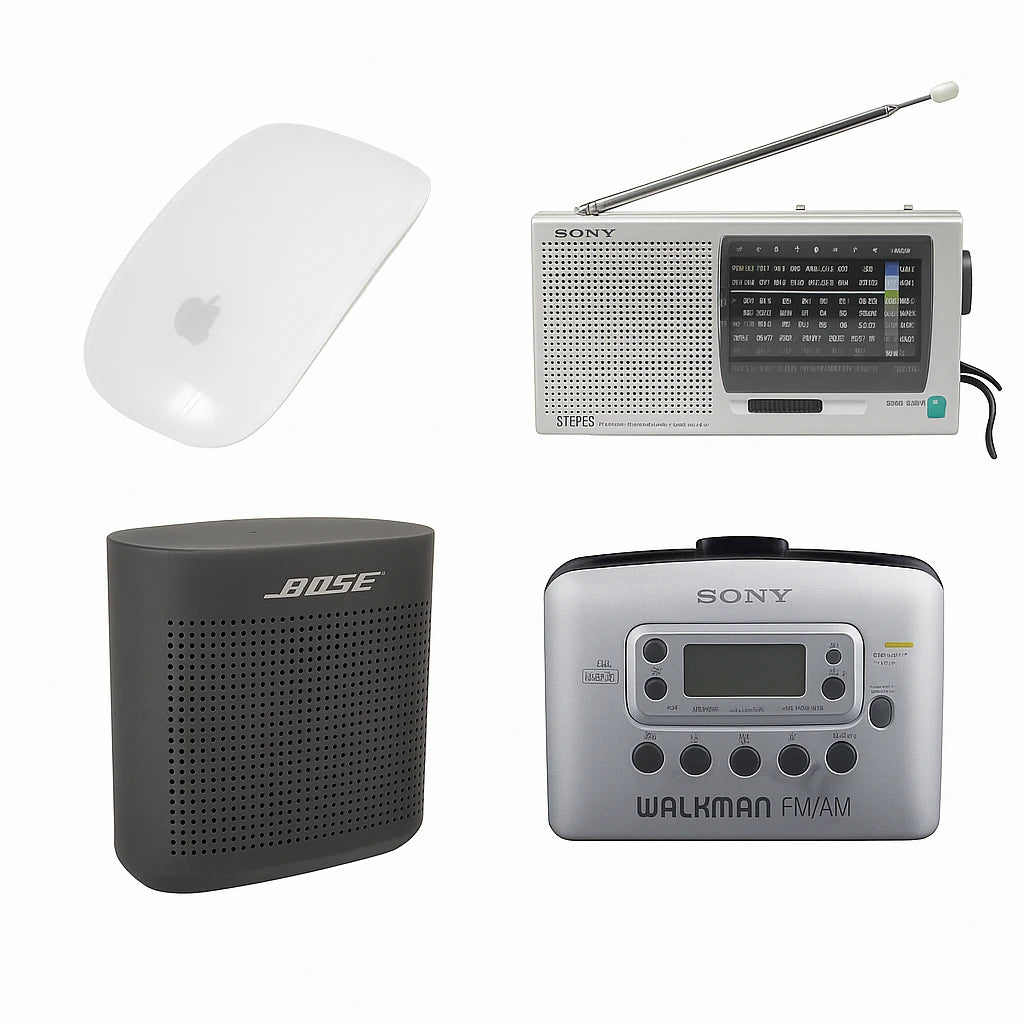
0 comments